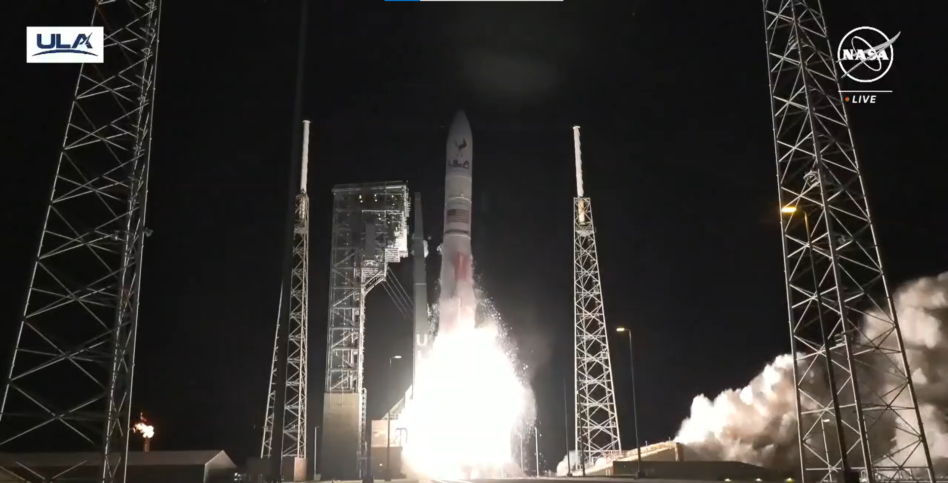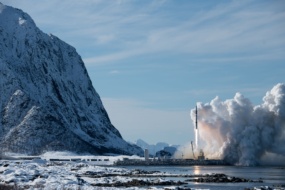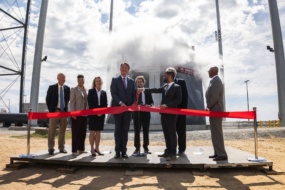After nearly a decade of development, ULA’s Vulcan rocket has finally launched.
It was an early morning for stateside rocket aficionados. Viewers were treated to a rare on-time first launch of a new rocket—Vulcan lifted off at 2:18am ET, right on schedule.
ULA CEO Tony Bruno marked the occasion with a “Yee-haw” from the control room. We couldn’t agree more.
The road so far: Vulcan is the first new rocket developed by ULA since the company’s birth as a joint venture of Lockheed Martin ($LMT) and Boeing’s ($BA) rocket divisions in 2014. It’s a two-stage launcher that incorporates some legacy hardware from Atlas and Delta as well as the ULA-designed Centaur V upper stage and a lot of new hardware. Other specs:
- Vulcan stands 61.6 m (~202 ft) tall on the pad
- It’s designed to lift 8,400+ kg to GEO or 19,000+ kg to LEO
Early in Vulcan development, ULA made the decision to use the Blue Origin-built BE-4 engines to power the first stage. The decision was meant to lower costs and ensure that the engines were built in the US, but supply chain issues and development woes pushed back the delivery date by several years.
Vulcan was originally meant to make its debut in 2020, but engine delays and developmental issues with the Centaur upper stage caused delay after delay. Now, though, the rocket’s time has officially come.
First flight: This morning’s flight was the first certification mission for Vulcan (and bore the practical mission name Cert-1). Weather conditions worked in ULA’s favor and the countdown to launch progressed smoothly.
- Vulcan lifted off at 2:18am from Space Launch Complex 41 at Cape Canaveral.
- The two solid rocket boosters were jettisoned at T+1:50.
- Stage separation occurred at T+5:04.
- ~47 minutes into the flight, the Centaur stage successfully placed the Peregrine lunar lander on a highly elliptical orbit to send it Moonward.
Precious cargo: The Cert-1 flight’s primary payload was Astrobotic’s Peregrine lunar lander, the first member of NASA’s Commercial Lunar Payload Services (CLPS) program to make it off the ground and head towards the Moon. Peregrine is now safely on its way. Astrobotic is targeting a soft-landing on the Moon on Feb. 23.
Up next for Vulcan: Now that ULA has gotten its new heavy-lift rocket off the ground once, it’s time to repeat the feat again…and again. Vulcan already has a hefty backlog of customers waiting for their rides to space, including 38 planned launches to deploy Amazon’s Kuiper constellation. And there’s one more certification flight required before the company can start finally competing with SpaceX to launch lucrative military missions.




